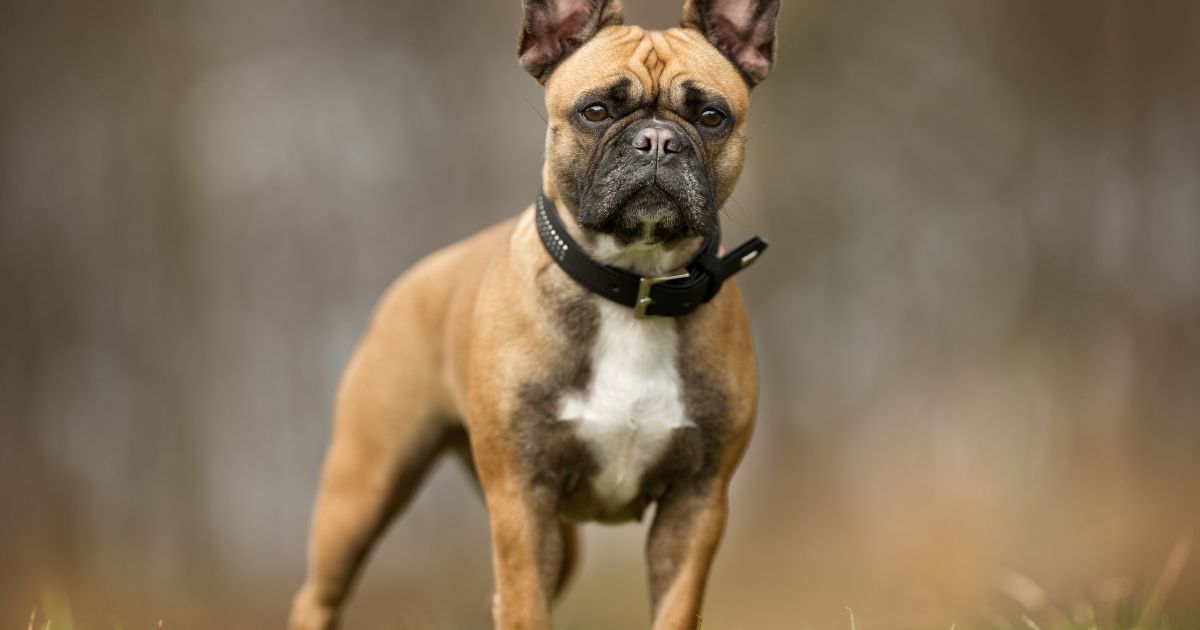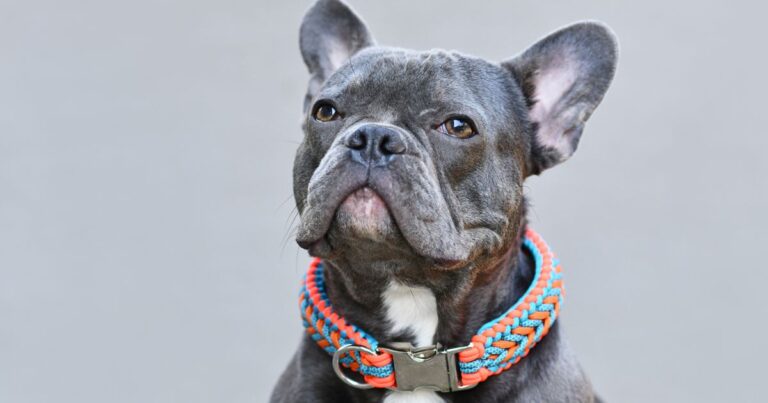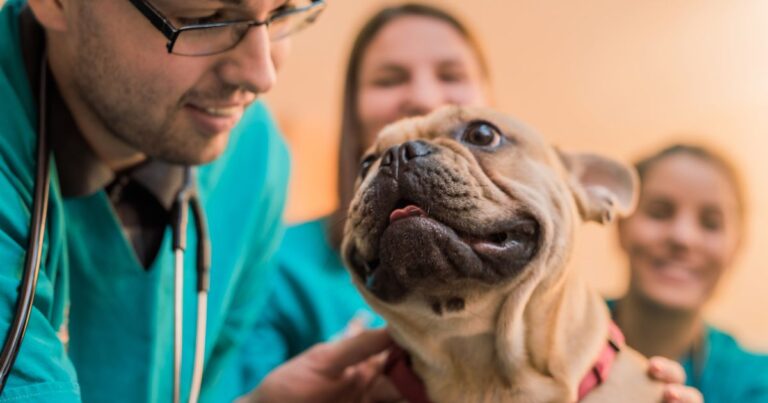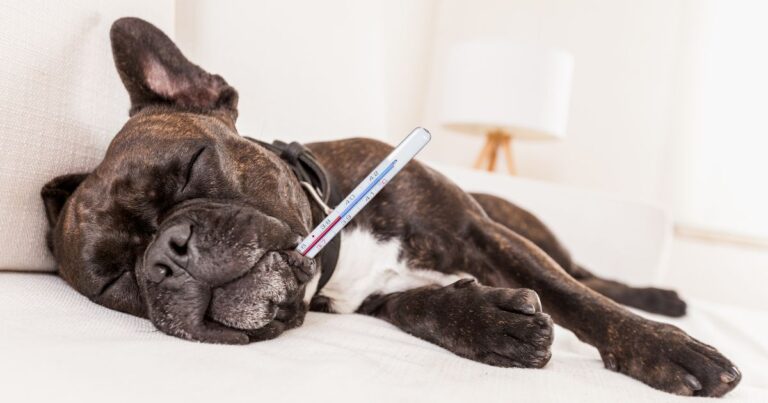French Bulldog Intervertebral Disc Disease
Table of Contents
French Bulldog Intervertebral Disc Disease
| Symptoms | Description |
|---|---|
| Pain | Your Frenchie may whimper, show reluctance to move, or exhibit other signs of discomfort. |
| Difficulty Walking | You may notice a wobbly gait, dragging of the back legs, or an inability to stand. |
| Changes in Behavior | Dogs in pain may become more irritable or anxious, or show a decrease in appetite or activity. |
| Loss of Bladder or Bowel Control | In severe cases, IVDD can lead to incontinence. |
| Paralysis | In the most severe cases, IVDD can lead to paralysis of the hind legs. |
Ever wondered why your adorable Frenchie, with its bat-like ears and smushy face, might waddle a bit? It could be French Bulldog Intervertebral Disc Disease (IVDD)! Stick around as we unravel this mystery, sharing insights, personal stories, and tips to keep your pup’s tail wagging!

Introduction
If you’re a French Bulldog owner like me, or even just a dog lover, you’ve probably heard about Intervertebral Disc Disease (IVDD) and wondered what it means for our furry friends. IVDD is a condition that affects the discs in the spine, causing them to degenerate over time. This can lead to a host of problems, including pain, difficulty walking, and in severe cases, paralysis
IVDD can be a daunting diagnosis, but with the right knowledge and care, our French Bulldogs can lead happy and fulfilling lives.
In this article, we’ll delve deep into the world of French Bulldogs and IVDD, exploring everything from why this breed is prone to the disease, to recognizing the signs, and understanding the treatment options. So, whether you’re a seasoned Frenchie owner or a new one, this comprehensive guide will equip you with the knowledge you need to ensure your pup leads a happy and healthy life.
5 Things to Do If You Suspect Your Frenchie Has IVDD
- Don’t panic – stay calm for your pup.
- Limit your dog’s movement to prevent further injury.
- Contact your vet immediately.
- Follow your vet’s advice and treatment plan.
- Provide lots of love and reassurance to your Frenchie.
Understanding Intervertebral Disc Disease (IVDD)
Before we dive into the specifics of IVDD in French Bulldogs, let’s take a moment to understand what this disease is all about. IVDD is a condition where the cushioning discs between the vertebrae of the spinal column either bulge or burst (herniate) into the spinal cord space. These discs then press on the nerves running through the spinal cord, causing pain, nerve damage, and even paralysis.
In dogs, IVDD is typically a result of degenerative changes, but it can also occur due to trauma. It’s a serious condition that requires immediate veterinary attention. But don’t worry, with proper care and management, dogs with IVDD can still lead fulfilling lives.
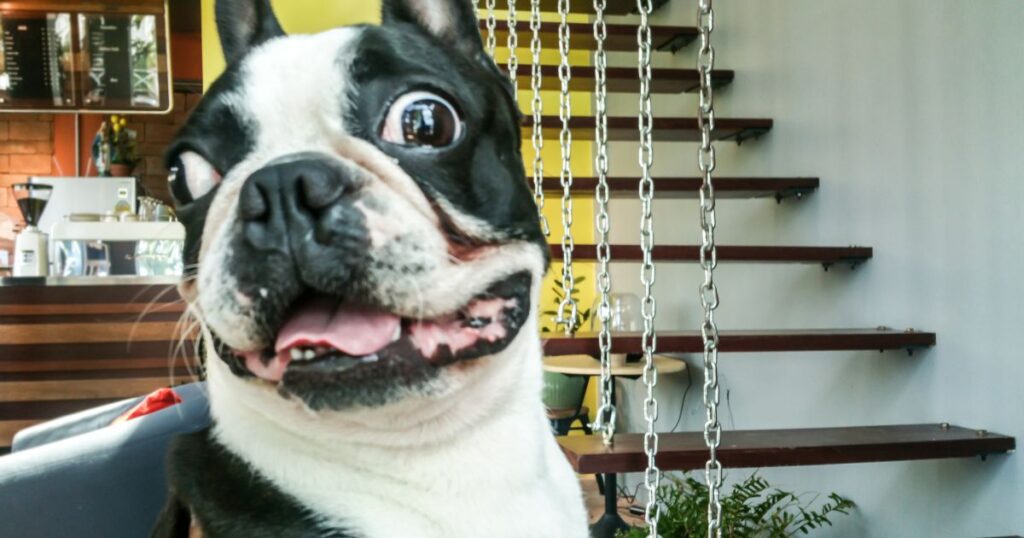
Why French Bulldogs are Prone to IVDD
You might be wondering why our beloved French Bulldogs are more susceptible to IVDD than other breeds – let’s unravel this mystery. French Bulldogs, like other “chondrodystrophic” breeds, are genetically predisposed to early disc degeneration. This means their intervertebral discs begin to age and harden at a younger age compared to non-chondrodystrophic breeds.
This early onset of disc degeneration, combined with the French Bulldog’s unique physical characteristics – their short stature and compact build – increases their risk of developing IVDD. However, it’s important to remember that while French Bulldogs are at a higher risk, not every Frenchie will develop this condition.
French Bulldog Characteristics
| Characteristic | Description |
|---|---|
| Size | Small but sturdy, typically weighing between 16-28 pounds. |
| Lifespan | Generally live between 10-12 years. |
| Temperament | Known for their friendly, sociable nature. |
| Health | Prone to certain health issues, including IVDD. |
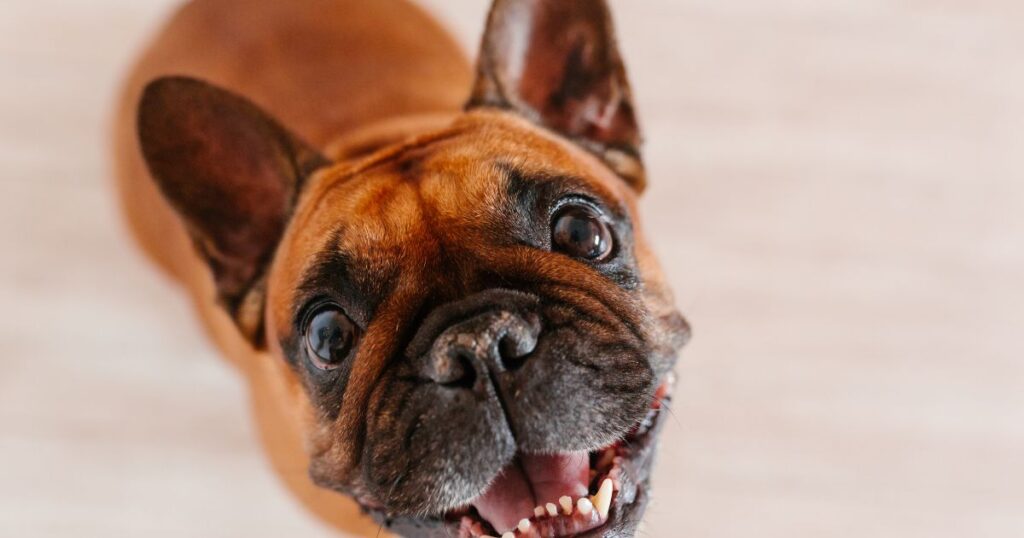
Recognizing the Signs of IVDD in Your French Bulldog
As a French Bulldog owner, it’s crucial to recognize the signs of IVDD early on – here’s what you should look out for. The symptoms of IVDD can vary greatly depending on the location and severity of the disc disease. Some common signs include reluctance to jump or climb stairs, decreased activity levels, loss of balance, dragging of the back legs, and in severe cases, paralysis.
It’s also important to note that IVDD can be a painful condition. So, if your Frenchie is showing signs of discomfort, such as whimpering, restlessness, or a loss of appetite, it’s worth consulting your vet. Remember, early detection and treatment can significantly improve the prognosis for dogs with IVDD.
Top 5 Signs of IVDD in French Bulldogs
- Reluctance to jump or climb stairs
- Decreased activity levels
- Loss of balance
- Dragging of the back legs
- In severe cases, paralysis
The Role of Surgery in Treating IVDD
The word ‘surgery’ can be scary, but sometimes it’s the best course of action to help our French Bulldogs combat IVDD. When conservative treatments like rest and medication don’t provide relief, or if the disease is causing significant neurological deficits, surgery may be recommended.
Surgical treatment for IVDD involves removing the herniated disc material that’s pressing on the spinal cord. This procedure, known as a ‘disc decompression surgery’, can significantly improve the quality of life for dogs with severe IVDD. However, like any surgical procedure, it comes with risks and requires a period of post-operative care and rehabilitation.
5 Tips for Caring for a Frenchie Post-IVDD Surgery
- Follow your vet’s post-operative care instructions.
- Manage your Frenchie’s pain with prescribed medications.
- Assist with physical therapy exercises.
- Monitor for any changes or complications.
- Provide lots of love and patience.

Risk Factors and Prevention of IVDD
While we can’t completely eliminate the risk of IVDD, understanding its risk factors can help us take preventive measures. Factors such as age, breed, and genetics play a role in the development of IVDD. However, lifestyle factors like diet and exercise also have a significant impact.
Maintaining a healthy weight is crucial as obesity can put additional strain on the spine. Regular, gentle exercise can help keep your Frenchie’s muscles strong and flexible, which can support spinal health. Also, try to minimize activities that put undue stress on your dog’s spine, like jumping off high surfaces.
IVDD Prevention Tips
| Prevention Tips | Description |
|---|---|
| Maintain a Healthy Weight | Obesity can put extra strain on your Frenchie’s spine. |
| Regular, Gentle Exercise | Helps keep your dog’s muscles strong and flexible. |
| Avoid High-impact Activities | Jumping off high surfaces can put undue stress on the spine. |
| Regular Vet Check-ups | Early detection can improve the prognosis for dogs with IVDD. |
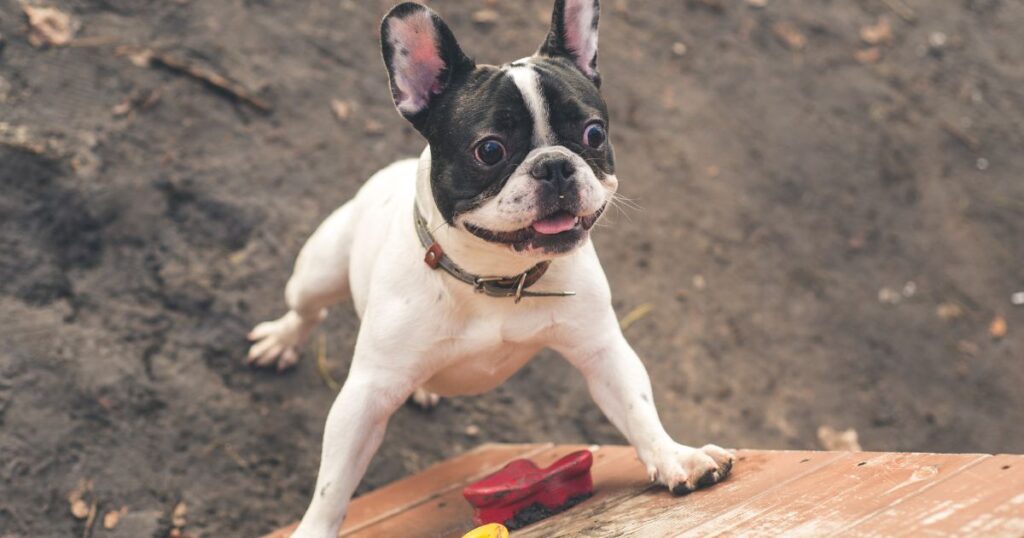
Living with a French Bulldog with IVDD: Personal Anecdotes
Living with a French Bulldog with IVDD can be challenging, but it’s also filled with moments of joy, resilience, and unconditional love – let me share some of my personal experiences. When my Frenchie, Croissant, was diagnosed with IVDD, I was devastated. But with time, patience, and a lot of love, we’ve learned to navigate this journey together.
5 Ways to Make Your Home More IVDD-friendly
- Use ramps instead of stairs.
- Provide a comfortable, supportive bed.
- Keep essentials like food and water bowls within easy reach.
- Use non-slip mats to help your Frenchie navigate.
- Avoid furniture your Frenchie might be tempted to jump on.
Living with a French Bulldog with IVDD
| Aspect | Description |
|---|---|
| Home Adaptation | Making your home more accessible, such as using ramps instead of stairs. |
| Medication Management | Learning how to administer medications and monitor for side effects. |
| Regular Vet Visits | Regular check-ups and consultations with your vet are crucial. |
| Emotional Support | Providing love and reassurance to your Frenchie during this challenging time. |
From adapting our home to make it more accessible for him, to learning how to administer his medications, each day brings new challenges and victories. Despite his condition, Croissant continues to be a source of joy and inspiration, reminding me of the resilience and spirit of our French Bulldog companions.
IVDD Treatment Options
| Treatment | Description |
|---|---|
| Rest and Pain Management | Initial treatment often involves strict rest and medications to control pain and inflammation. |
| Physical Therapy | Can help improve mobility and strength, and reduce pain. |
| Surgery | In severe cases, surgery may be needed to remove the herniated disc material. |
| Post-operative Care | This includes pain management, physical therapy, and regular follow-ups with the vet. |
Living with a French Bulldog with IVDD can be challenging, but it’s also filled with moments of joy, resilience, and unconditional love.
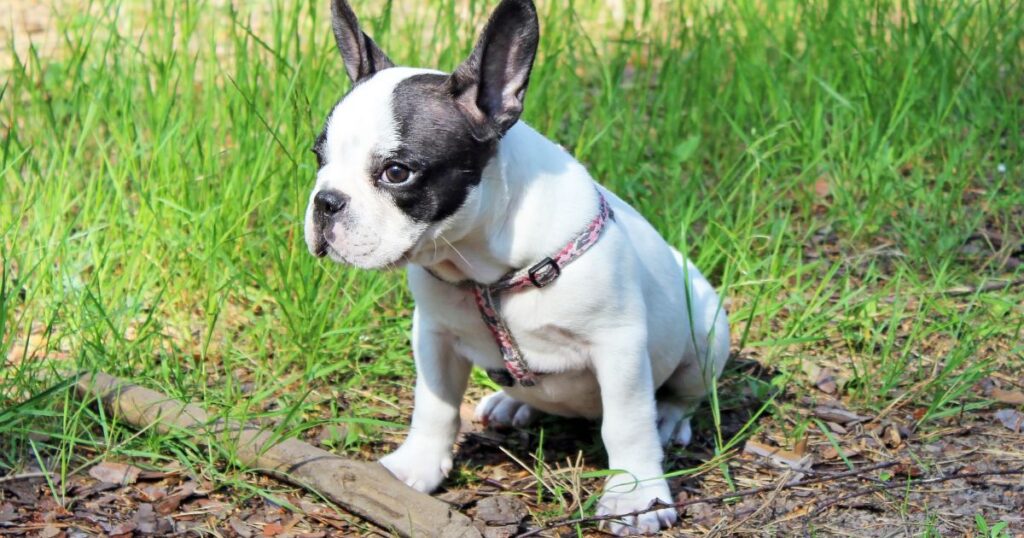
Conclusion
IVDD can be a daunting diagnosis, but with the right knowledge and care, our French Bulldogs can lead happy and fulfilling lives. It’s about understanding the condition, recognizing the signs, and taking the necessary steps towards treatment and prevention.
Remember, every Frenchie is unique, and what works for one may not work for another. It’s always best to consult with your vet to develop a care plan that’s tailored to your dog’s specific needs. And through it all, remember to cherish each moment with your Frenchie, because they’re not just pets, they’re family.
Disclaimer: This article is intended for informational purposes only. It’s not a substitute for professional veterinary advice, diagnosis, or treatment. Always seek the advice of your veterinarian with any questions you may have regarding your pet’s health.
Call to Action: Want to learn more about French Bulldog health and care? Check out our comprehensive guide on French Bulldog Health and Care. For more specific information on common health issues in French Bulldogs, visit our page on French Bulldog health issues.
Also check out our other pages: French Bulldog Patellar Luxation and French Bulldog Von Willebrand’s Disease
Frequently Asked Questions
Do French Bulldogs recover from IVDD?
Yes, with the right treatment and care, French Bulldogs can recover from IVDD. The recovery process often involves rest, medication, and in some cases, surgery. Physical therapy can also be beneficial in helping your Frenchie regain mobility and strength.
Can a French Bulldog live with IVDD?
Absolutely! While IVDD is a serious condition, it doesn’t mean your Frenchie can’t lead a happy and fulfilling life. With proper management, including medication, lifestyle modifications, and regular vet check-ups, your Frenchie can live comfortably with IVDD.
How do I know if my French Bulldog has IVDD?
Signs of IVDD in French Bulldogs can include reluctance to jump or climb stairs, decreased activity levels, loss of balance, and dragging of the back legs. In severe cases, IVDD can lead to paralysis. If you notice any of these signs, it’s important to consult your vet immediately.
Do French Bulldogs have disc problems?
Yes, French Bulldogs are one of the breeds that are more prone to developing disc problems, including IVDD. This is due to their unique physical characteristics and genetic predisposition to early disc degeneration.
Can IVDD be fixed without surgery?
In some cases, yes. Mild cases of IVDD can often be managed with rest and medication. However, in severe cases or when conservative treatments don’t provide relief, surgery may be recommended.
Is it OK to walk a dog with IVDD?
It depends on the severity of the condition. In mild cases, gentle exercise can be beneficial. However, in more severe cases or during a flare-up, rest is often recommended. Always consult your vet for advice tailored to your Frenchie’s specific needs.
Can dogs with IVDD walk again without surgery?
In some cases, with rest, medication, and physical therapy, dogs with IVDD can regain their ability to walk. However, in severe cases, surgery may be necessary.
What age is IVDD most common?
IVDD can occur at any age, but it’s most commonly diagnosed in middle-aged to older dogs, typically between the ages of 4 and 8.
What is Stage 1 IVDD in dogs?
Stage 1 IVDD is the mildest form of the disease. It’s characterized by pain but no significant neurological symptoms, such as difficulty walking or paralysis.
How long is the life expectancy of an IVDD dog?
With proper care and management, a dog with IVDD can live a normal lifespan. The key is early detection, appropriate treatment, and regular vet check-ups.
Can a dog with IVDD live a normal life?
Yes, a dog with IVDD can live a normal life with the right care and management. This includes medication, lifestyle modifications, and in some cases, surgery.
What age do dogs develop IVDD?
While IVDD can occur at any age, it’s most commonly seen in middle-aged to older dogs. However, in breeds like the French Bulldog, early onset of disc degeneration can lead to IVDD symptoms at a younger age.
